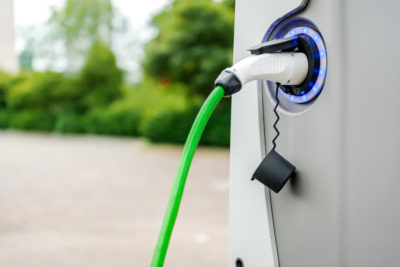
Do You Have EV Selling Opportunities Coming, Too?
By Desiree Homer
This may be a rebound year for Mini dealers, thanks to the new model, Mini Cooper SE. This fully electric car is due in March, and we found some dealers are just as excited about it as the Mini consumer enthusiasts are. Considering Mini’s U.S. numbers were down 17.4% last year, this new EV model carries hopes of franchise dealer growth in 2020.
Going beyond this Mini headline, does your brand carry a new EV model that has you optimistic about sales this year? We found some sources citing dealers haven’t always embraced EV and hybrid vehicle introductions. However, those dealers embracing the technology, and implementing proper strategies in-house, are leveraging better EV sales. Here’s how they’re doing it.
Dealers Haven’t Always Been Fans
Over the years, dealer owners recognized that some models just don’t sell. In some cases, dealers didn’t want them on the lot at all. The future was uncertain back then, and managers weren’t completely sold on the trend or reliability of first-generation EVs. It’s no secret; you can’t sell a product in which you don’t believe. But the times and technology have changed significantly. The manufacturers are bringing capable performance electric and hybrid vehicles to the table. Consumers are hungry for them too.
Factory Incentives Can Help
You might not have control over whether or not your brand(s) offers manufacturer incentives to promote a new line of EV or hybrid models, but many incentives do exist. Mini enhanced the dealer-level incentives, allowing back-end rewards of up to 4% and enforcing compliance and dealer training.
Education at the Staff and Sales Level
Just as you rely on your teams to be knowledgeable about your existing brands, you’ll want them to be just as confident about any new EV models coming to your showroom. Some manufacturer training courses, while essential, don’t guarantee your sales members are ready to really sell these cars. To prepare everyone for the latest technology, and more importantly, how to sell this technology, consider in-house supplemental education for your teams. How well they understand battery lifecycles, vehicle limitations, and charging best practices, will determine how successful they are at the desk with customers.
There’s More to an EV than Range
Sales professionals will often resort to selling based on those benefits and features they understand the most. When it comes to selling EVs and hybrids successfully, it’s critical to remember there’s more to these models than batteries and range. Consider having your staff emerge themselves in all the benefits of the vehicles, to find other features and selling points that go beyond a battery pack. Ranges are often estimates, too. So, making guarantees on estimated data can be promises your teams can’t keep.
Introducing Consumers to an EV Lifestyle
Electric vehicles are not only new to you, but they’re also new to consumers. Similar to the selling techniques professionals use when selling campers and pickups, encourage your teams to practice selling an EV lifestyle. Asking questions about a customer’s routine and driving habits can help the salesperson identify how to explain the electric vehicle as a solution or perfect fit to that lifestyle.
Many dealers have been hesitant to embrace electric technology in years past. However, there is an opportunity for some franchise dealers with new EV and hybrid models coming this year, to get on board. Mini dealers, who say their revenue streams, have been primarily based on used car sales, factory incentives, and sister franchises with BMW, are certainly getting ready for theirs. They have a new all-electric car coming to their lots, and they’re excited to sell them.












